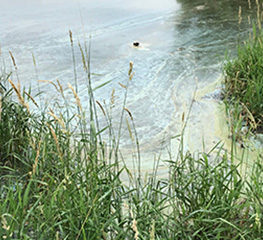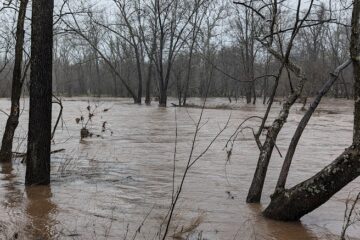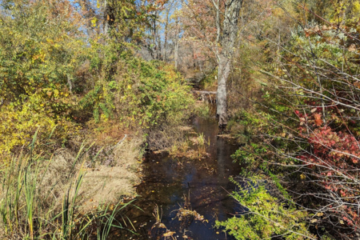 The cyanobacteria outbreaks that shut down many New Jersey lakes and reservoirs last summer have returned, threatening recreation areas and swimming holes that have grown in popularity since the coronavirus pandemic reduced the public’s other entertainment options.
The cyanobacteria outbreaks that shut down many New Jersey lakes and reservoirs last summer have returned, threatening recreation areas and swimming holes that have grown in popularity since the coronavirus pandemic reduced the public’s other entertainment options.
The New Jersey Department of Environmental Protection (DEP) has posted advisories for parts of Spruce Run Reservoir in Clinton – a popular recreation area and part of Central Jersey’s water supply – along with Greenwood Lake in Passaic County and other lakes throughout the state. As the summer continues to heat up, more could follow.
Cyanobacteria, commonly known as blue-green algae, can cause skin rashes if touched, and flu-like symptoms like abdominal pain, nausea, vomiting and headaches if swallowed. Fish caught in these waters should not be eaten, and boats and equipment used on these lakes should be thoroughly rinsed with clean water. Dogs shouldn’t be allowed to swim in affected waters, as they can get sick or die from swallowing toxic water.
This summer’s return of harmful algal blooms, or HABs for short, is not really a surprise, as the conditions leading to their spread haven’t changed much since last year.
HABs need three ingredients: the presence of cyanobacteria, warm water, and food. Bacteria have always been present in lakes and reservoirs, so there’s no getting around that. Lakes (especially shallow ones) are getting warmer all year round due to climate change. And, unfortunately, we continue to feed the HABs with pollution washed into the waters by rainstorms.
Raritan Headwaters Association, the region’s watershed watchdog, strongly urges local officials to address the most controllable aspect of the HABs problem: stormwater runoff, which washes chemical fertilizers, animal waste, coliform bacteria from faulty septic systems and other pollutants into rivers, streams, lakes and reservoirs.
Communities should consider establishing stormwater utilities, as allowed by a state law passed in 2019. Although the law was criticized by opponents as a “rain tax,” the fact is that creating stormwater utilities is the most obvious way to help prevent harmful algal blooms.
Here’s how stormwater utilities would work: If commercial and residential developments that contribute to excessive stormwater runoff are forced to pay, it would be an incentive to incorporate more “green infrastructure” into their design. The more particular sites contribute to stormwater runoff, like big-box stores with huge parking lots, the more they would pay in utility fees. And the fees collected by stormwater utilities could pay for local projects like rain gardens, bioswales and permeable pavements that can help filter pollution from stormwater runoff.
The state took a step in the right direction last year by awarding $13 million in grants to pay for local pilot projects aimed at reducing HABs. Green infrastructure projects like building a rain garden at a school or library are going to improve the health of a community’s water resources and hopefully the success of these projects can be replicated elsewhere.
In the meantime, local residents can do their part by saying “no” to chemical lawn and garden fertilizers, making sure their septic systems are working properly and picking up pet waste.
Harmful algae blooms are a manmade problem, and it’s up to us to take action to help solve it!
Please stay safe this summer and be aware of cyanobacteria outbreaks. The DEP has created a color-coded warning system to let residents know which lakes are safe for swimming, fishing, letting your dog take a dip, or paddling a kayak or canoe.
Go to www.nj.gov/dep/hab/ and click on the “Interactive Mapping and Reporting System.” And if you spot what looks like a HAB, you can also use the site to report it so the state can come to inspect and test.
Bill Kibler
RHA’s Director of Policy



